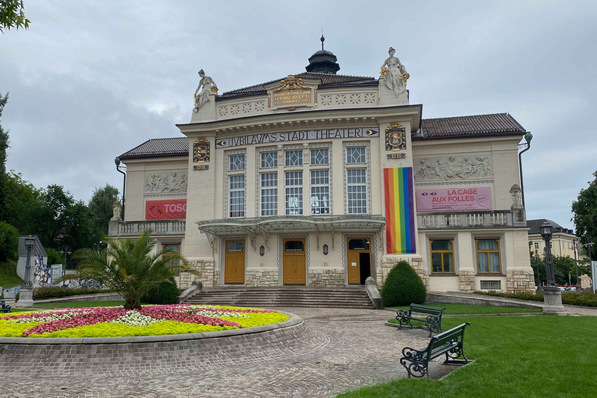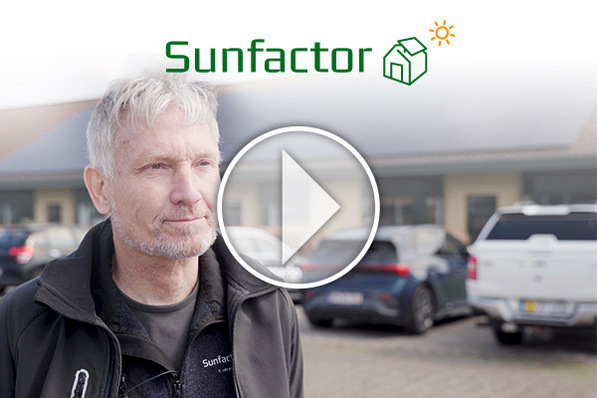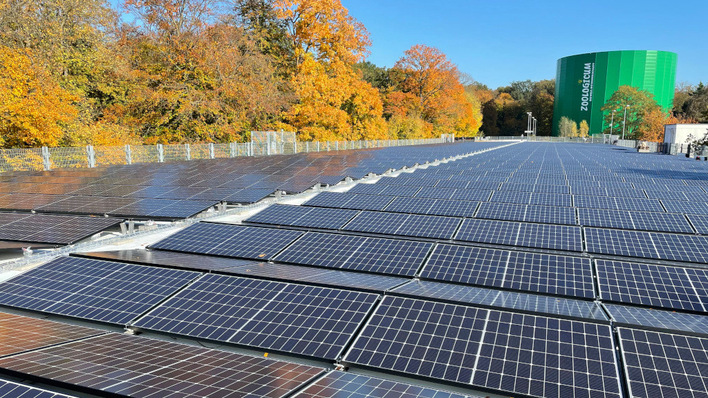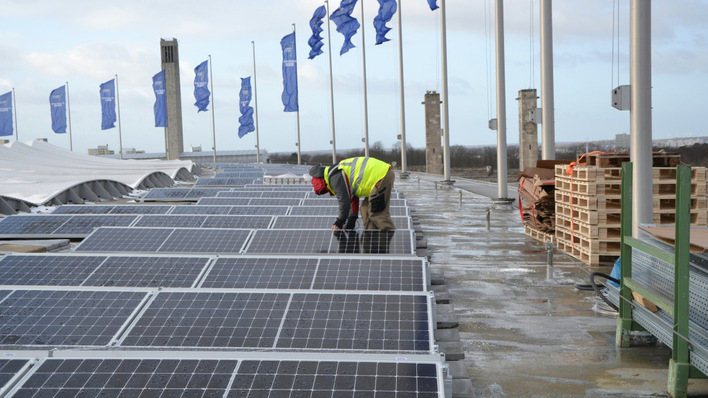Good news for all the installers out there: The Hamburg-based company S:Flex has developed a mounting technology compatible with standing seam metal roofs which does not require rails. “With our special standing seam clamp we can do without rails,” Bernhard Thiesbrummel, CEO of S:Flex explains. “The clamp is mounted directly to the metal seam. That has many advantages: The components that reach the construction site are smaller. They are much easier to transport than long rails.”
Because there is no expansion of meters of rails, the amount of thermal stress that a roof undergoes is also much less. The clamp uses the proven click technology, which has been the standard for all S:Flex systems. “The clamp also allows us to mount small DC optimisers or module inverters without requiring further specialised parts,” Bernhard Thiesbrummel continues. “This clamp allows us to equip 80 percent of Europe’s standing seam metal roofs – and for other profiles we are working on developing solutions.”
A delicate balancing act
Developing, building and selling mounting systems is a delicate balancing act in a number of ways. In two respects the requirements are tough: The mounting system should be as low-cost and take as little time to build as possible, thus keeping labour costs down. “We have to meet high expectations as far as quality and price as well as service are concerned,” the CEO confirms. “And in this, our products seem to have the edge with technicians. Our customers appreciate not being put on hold when they call us, and also when deliveries make it to the construction site on time.”
Along with the core markets in Europe, S:Flex is also having success in North America. And that is also where the idea for rail-less mounting on standing seam metal roofs was developed. “But technicians in the US or the UK are no different than those over here. They like to use systems that they are familiar with,” Thiesbrummel says. “The clamp has now been on the market for a year and a half, our clients like the system very much and we are generating good sales figures.”
Between 300 and 400 megawatts per year
However, S:Flex is not planning to apply rail-less mounting to other types of roof: Variations in the spacing of rafters and different module grids make it difficult to adequately mount the systems on the roof, according to Bernhard Thiesbrummel: “Thus we are not planning to have rail-less systems for tiled roofs.”
Over all, the company had a turnover of between 300 and 400 megawatts last year, with similar figures to be expected this year. The company headquarters are in Hamburg-Bergedorf, with offices as well as the product development and sales departments. Warehouses, delivery, assembly and support are situated in Freiburg im Breisgau. The company sells mounting systems on three continents: Europe, North America and Africa. S:Flex has a branch office in Denver, Colorado, as well as in the UK and the Netherlands respectively. A small team is active in Spain, where 500 kilowatts were recently implemented. S:Flex employs a total staff of 22 (excluding the US). A quarter of the turnover is generated in Germany, the other three quarters in Europe and beyond.
Roof systems are the best sellers
Both the metal roof systems and classic pitched roof systems with roof hooks and rails are selling very well. S:Flex offers nearly the full range of fixed installation systems. These include support frames for flat roofs and aerodynamic systems, pitched roof and even façade systems, if desired. Flat roof and pitched roof systems each account for about 40 percent of the turnover, ground mounted structures for about a fifth. “Germany is and will remain our home market. Our goal is to deliver all over Europe.” What products are not available from S:Flex? “We don’t build tracker systems,” Bernhard Thiesbrummel remarks. “That is a very specialised segment and so far is only a small niche market.”
Business at the Hamburg-based supplier of mounting systems is dominated by the roof-top segment, which is gaining in importance in Europe and the US. The market is becoming more diversified, but it is thriving. Intended customers are installation companies and project designers. EPC contractors who build megawatt-scale solar parks as well as wholesalers are less significant.
European markets begin to open up
The European greenfield market is very small. Anyone building larger solar parks usually has already found and qualified a supplier. However, a new market is beginning to open up: Installation companies increasingly ask for small systems to be installed on small open plots.
S:Flex has developed a mounting kit, which is being distributed by system integrators as part of their complete packages with solar panels and inverters. Panel manufacturers or wholesalers also offer such packages. Free-standing solar systems of up to ten kilowatts are becoming widely accepted in the UK and Austria.
The free-standing kit is suitable for snow and wind load zone 3 and can be mounted at ten to 30 degrees of inclination. Four panels add up to one kilowatt and can be extended by the kilowatt without requiring extensive pile-driving work. One technician can mount it by himself. A new market is in the offing in Ireland: There is sufficient land and the government is planning to promote photovoltaics.
An old hand in the PV business
Bernhard Thiesbrummel is an old hand at this: He knows the PV sector from back in 2000. At first he was working for Suntechnics. He built solar installations in Switzerland, for example at the Jungfrauenjoch in the Bernese Alps, along the border to the Canton of Valais.
In St. Moritz, the engineer supervised façade installations – up to 560 kilowatts a piece – which back then still involved unframed 100-watt panels built by Siemens. From 2005 onwards, he was part of the Spanish boom and then founded S:Flex in 2009.
Thiesbrummel has seen markets rise and fall, he has climbed mountains and crossed valleys –sticking with the Alpine metaphor. But he is optimistic: “This is a good time as far as a zest for innovation is concerned,” he judges. “The long period of economic depression is now behind us. We see that very clearly.”
Crucial needs of the customers
Plenty has changed since he started out. In the beginning, manufacturers would offer one product to fit all of the common types of roof. Now there are specific products for every application. “Weighing a modern mounting rail, you can see what progress has been achieved.” Customers usually find it crucial that the system is a modular to keep assembly and inventory management simple.
Despite the challenging market situation, S:Flex has made a conscious decision to get into the diversified roof-top market. “Especially in commercial and factory roofs there still is huge potential,” the expert predicts. “On the other hand, large greenfield installations are not an open market.” Greenfield and roof-top are two fundamentally different markets. One implies constructing a power plant, while the other is part of the building. Pricing and purchasing conditions are very different.
Solar roofs for subterranean caverns
The last years have seen quite a lot of movement in the European markets. The UK market is turning around completely: The era of large-scale installations is over, now roofs and industrial sites are coming to the fore. For instance, for the water supplier United Utilities, S:Flex has covered the roofs of subterranean caverns in solar panels.
This involved special surface foundations, because the technicians had to be careful when putting in the pilings. The metal roofs of the surrounding buildings were also covered in solar panels. The Scandinavian market is also slowly spooling up.
In order to better be able to supply the market for pitched-roof systems, together with Premium Mounting Technologies (PMT), S:Flex have developed an aerodynamic mounting system compatible with any pitched roofs covered in foil, bitumen as well as sandwich or trapezoidal sheet metal. The Flat Direct mounting system is used where penetrating the roof is not possible. Roof inclinations of up to 30 degrees are possible and the panels are mounted parallel to the roof using aluminium rails. A pilot project in Belgium is already handling 800 kilowatts using this technology.
Building across the gable
The special feature is that there is a sufficiently wide gap between the panels, which allows the wind to pass between them and press them down against the roof. What load from shifting and aerodynamic lift remains can be neutralised through ballast. In a gabled roof it is also possible to secure the solar installation across the gable: Either by using a counterweight on the other side of the roof, or by installing another solar array. Alternatively, it is possible to mechanically fix it to the gable or, for example, to a suitable row of skylights in steeply pitched pent or saw tooth roofs. The ridge angle connectors intended for gabled roofs can easily be adapted on-site.
Non-slip matts are attached to the base profiles and the cable duct is integrated into the top cover. This system is most suited to framed panels, but frameless laminates can also be installed, because the framing is not relevant to the stability of the system. And for the new mounting solution which will be presented for the first time at the Intersolar, S:Flex again uses its modular system when it comes to mounting the panels: One mid and end clamp using the simple click technology are sufficient for all frame heights.
Easy adaption of the system
In order to allow the technician to easily adapt the system, S:Flex provide their rails in five standard lengths. That way, he will no longer have to cut anything while on the roof. Sawdust is always trouble: for the technician, in the mounting process and for the long-term integrity of the roof.
S:Flex focusses on product development and sales. All important components come from Europe, mostly from Germany. “Producing in Asia and shipping the goods halfway around the world makes no sense in this business,” Bernhard Thiesbrummel says. “Markets are becoming more and more diversified and there is more effort involved. But this is exactly the line of business that we are in: We develop solutions to make life easier for our customers.” The company is currently hiring new technical and sales staff. (HS)
A short product information you find here.
For more products, read here.







